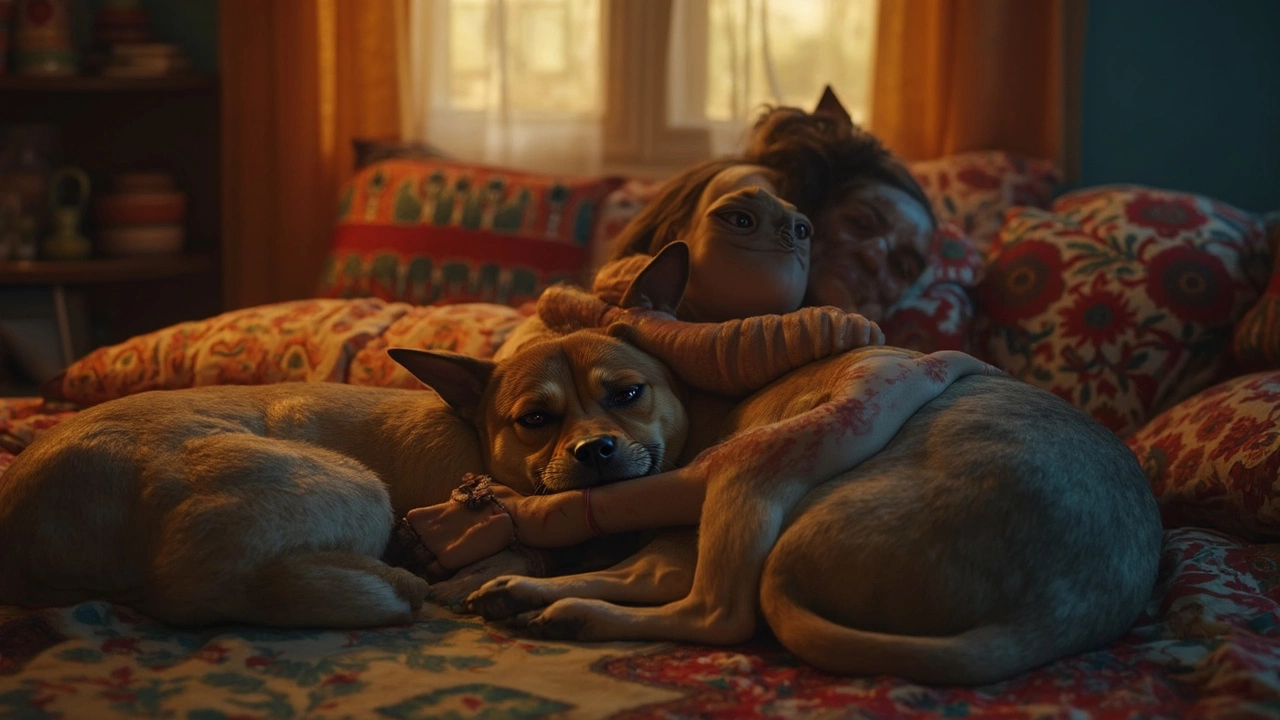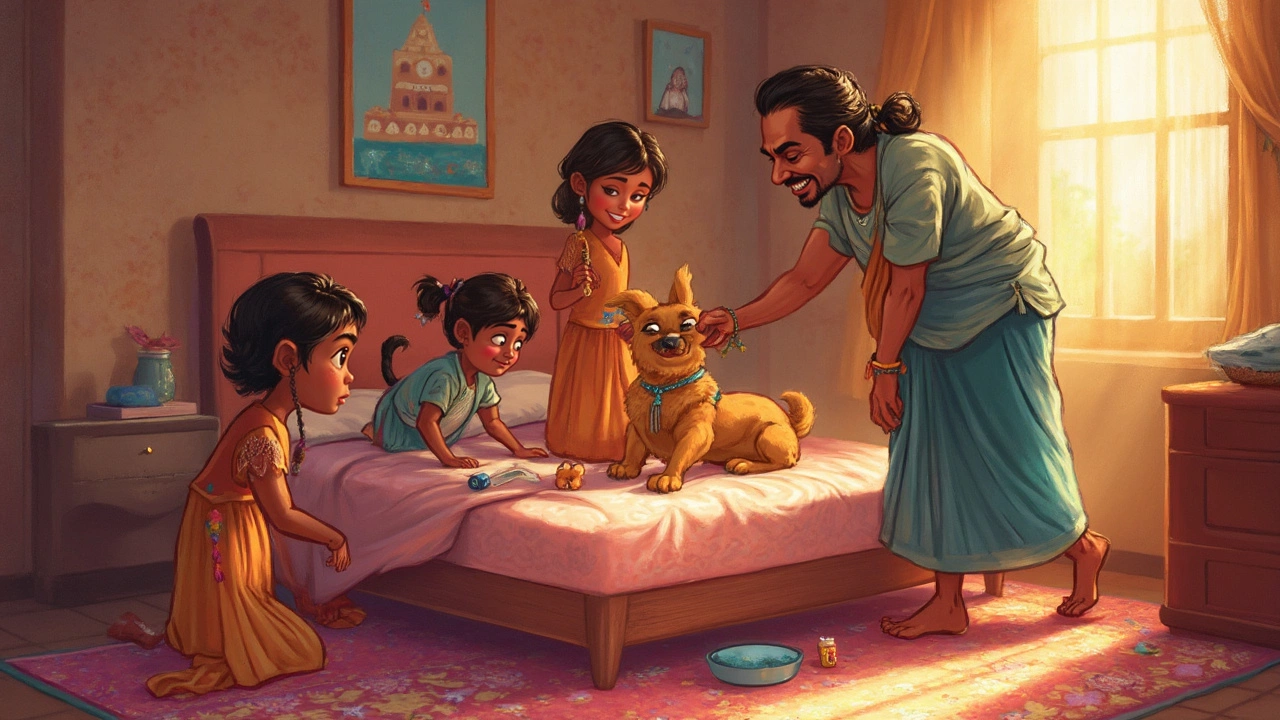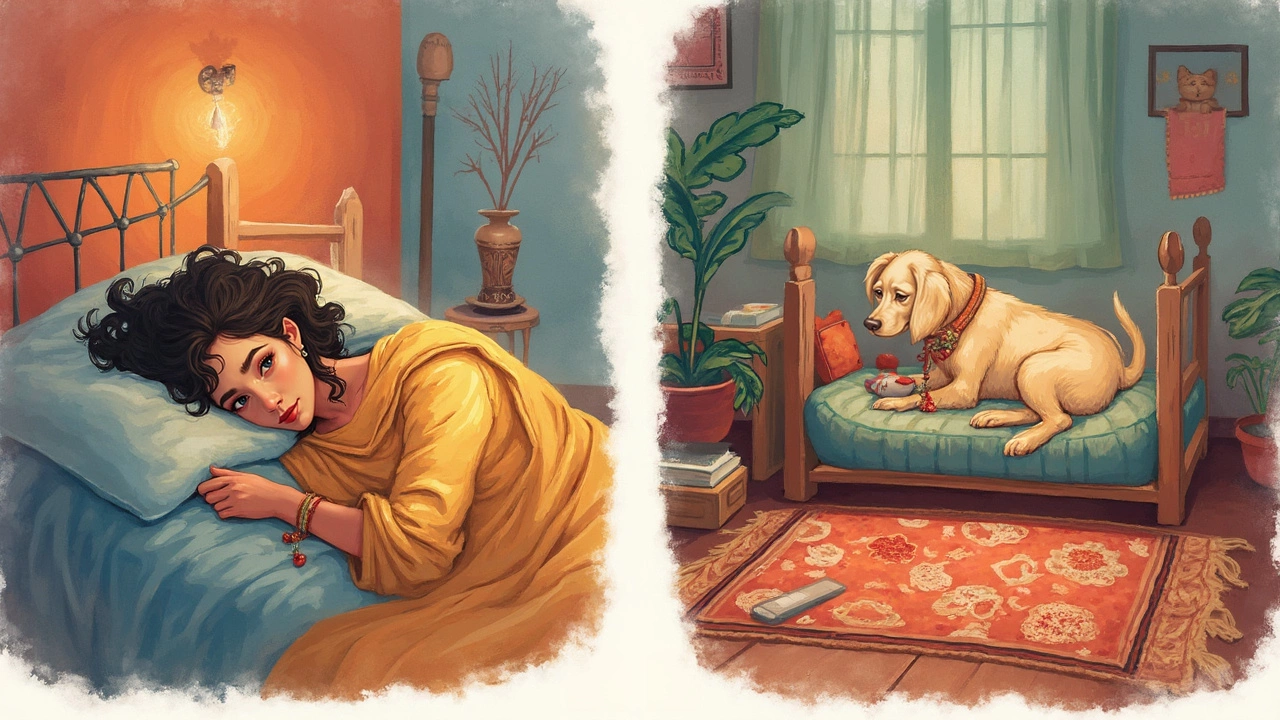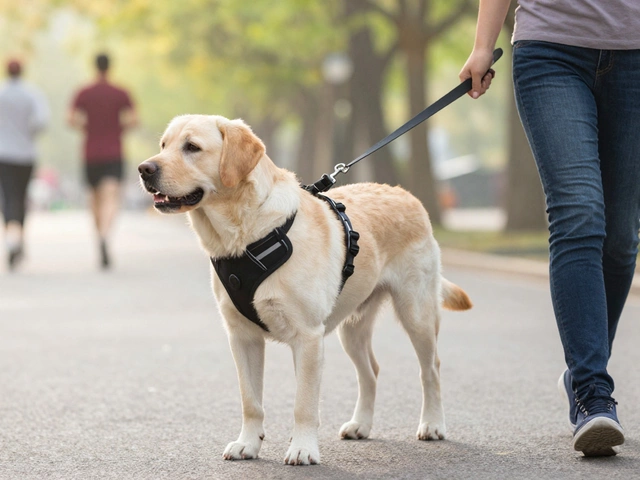
Ever notice your dog ignoring that fancy bed you bought and flopping down right up against your own? You’re not the only one. Turns out, dogs have a pack animal background—snuggling up near their favorite human just makes sense to them.
This habit goes way back to their ancestors sleeping in piles for warmth and protection. Modern pets still get comfort from being close, even if the wild is a far cry from your bedroom floor. For a lot of dogs, being near you is the ultimate safe spot, especially at night when everything feels just a bit more uncertain.
But is it really good for both of you? And can you gently teach your furry shadow to give you a bit more space? Let’s dig in and see what’s going on inside your dog’s head at bedtime—and what you can do if you need your own breathing room.
- The Real Reasons Dogs Sleep Close
- Bonding, Security, and Instinct
- Pros and Cons for You and Your Dog
- Signs It's Time for a Change
- How to Make Your Dog’s Own Bed Irresistible
The Real Reasons Dogs Sleep Close
Most dogs sleeping right next to your bed isn’t just a random habit. For starters, dogs have an instinct to stick close to their ‘pack,’ and in their minds, you’re the pack leader. Even puppies in a litter sleep all tangled up—that closeness is in their DNA. At home, your dog picks up on that old instinct and looks for safety by keeping you within paw’s reach.
Another big reason is comfort. Your scent, your breathing, and just knowing you’re nearby make your dog feel calm. Experts say this sense of security cuts down on stress for dogs, especially those who get anxious or are adjusting to a new home. If your dog follows you from room to room and settles in near you at night, it just means they feel safest when you’re close.
Sometimes, your dog’s age and history play a role, too. Young puppies, like human toddlers, want to know someone is there. Rescue dogs often crave extra closeness because it makes them feel secure after past traumas. No wonder so many dogs choose to snooze next to your bed even if there’s a top-notch dog bed just across the room.
This sleeping habit also comes down to warmth. Even during summer, the floor next to your bed might be cozier, especially if the rest of the house is chillier. Some breeds, like Chihuahuas or Whippets, get cold easily and zero in on spots where your body heat lingers.
If you’ve ever wondered if your dog’s showing you love with this bedtime ritual—the answer is yes. Dogs are social creatures and sleeping near you is their way of saying you’re part of their team. It’s a mix of nature, habit, and pure affection.
Bonding, Security, and Instinct
Dogs are natural pack animals. In the wild, members of a pack huddle together to stay safe, share warmth, and keep close to the leader. Even though your home is nothing like the wild, your dog hasn’t forgotten those old instincts. When they curl up near you, they're not just getting comfy—they’re showing trust and following their natural drive to bond with their pack leader (that’s you).
This need for closeness is also a sign your dog feels secure with you. Pets look to their humans for signals of safety. When something feels off, you might notice your pup sticks even closer, maybe touching you all night or always choosing the side of the bed nearest the door—they’re on duty, just in case.
Sleeping next to your bed instead of in their own dog bed is actually a compliment: your dog doesn’t want to miss a thing, and they feel most at ease with you nearby. Studies show that 86% of dog owners say their pets sleep most or all of the night near them, whether that's on the bed or right next to it. That’s just how strong those instincts run.
| Reason | Description |
|---|---|
| Bonding | Shows trust and attachment to you |
| Security | Feels protected when close to their human |
| Pack Instinct | View you as part of their social group |
If you’re finding fur on your side of the bed every morning, it’s because your dog’s hardwired habits make your spot the heart of their world. And while a dog bed might look nice in pictures, the pull to stay close is usually stronger—unless you give them a reason to love their own space just as much.

Pros and Cons for You and Your Dog
Sleeping next to your dog can feel pretty sweet—like you’ve got your own furry security guard. But it’s not all tail wags and warm fuzzies. There are legit upsides and downsides for both you and your pup when you share sleeping space.
Let’s break down the main perks first. Some studies show that having your dog snooze beside you can help you feel less lonely and even lower your stress. For dogs, being close means extra security, less anxiety, and a stronger bond. It’s no wonder your dog wants to stick by your side—it’s got everything to do with feeling safe and loved.
- Boosts bonding: Sharing sleep space can make your dog feel like a real part of the pack. You, too.
- Less stress: People with dogs in the bedroom sometimes report better sleep and less anxiety at night.
- Security for both: Dogs pick up on sounds and movement fast, so they might alert you to odd noises early.
But here’s where the cons creep in. Some folks end up tossing and turning because their dog hogs the covers or snores like an old engine. Plus, allergies can flare up if you’re sensitive. Dogs may also leap up or move around in the night, leaving you short on deep sleep. And if you have a puppy or a rescue working on separation issues, always sleeping together can set back your training plans.
- Interrupted sleep: Dogs move, dream, or get up for water, which can mean a broken night for you.
- Allergy triggers: Pet dander and fur can build up fast in your bedding, making allergies worse.
- Behavior problems: If your dog is anxious or over-attached, this habit can make it tougher for them to chill alone.
If your dog beds gather dust while your dog snoozes next to you, weigh these pros and cons. It could be just fine, or you might want to tweak the routine—to make sure everyone sleeps better and wakes up happy.
Signs It's Time for a Change
So, when does letting your dog crash beside your bed turn from cute to a problem? There are some solid signs it’s time to rethink where your dog sleeps. It’s not always about a dramatic moment—small things can add up, either for your own sleep or your dog’s health and happiness.
If you find yourself waking up at night because your dog sprawls out and crowds your space, that’s a big clue. According to sleep studies from the Mayo Clinic, over 20% of pet owners report sleep disruptions from pets in the bedroom. If your sleep takes a hit, your body and mind will feel it during the day.
Here are some specific flags your setup isn’t working anymore:
- Your dog whines or becomes anxious unless they’re touching or crowding you at night.
- Allergies flare up when your dog’s fur, dander, or dust gets in your bedding (the American College of Allergy, Asthma, and Immunology says pet dander is a sneaky sleep disruptor).
- Your dog growls, snaps, or gets too possessive about the spot next to your bed, especially if there are kids or other pets around.
- They have accidents during the night because they’re not used to sleeping away from you, which is way more common with puppies or anxious rescue dogs.
- Your routine or family needs change—like a new baby, a partner who didn’t grow up with dogs, or switching up bedrooms.
If you notice these things, it’s not just about comfort. Even for dogs, practicing independence is healthy. Here’s a quick look at when the need for change shows up, based on real pet owner data:
| Sign | % Pet Owners Affected |
|---|---|
| Disturbed Sleep | 22% |
| Increased Allergies | 12% |
| Possessive or Aggressive Behavior | 8% |
Don’t forget—dogs can get attached to routines just like us. But if “dog beds” aren’t just a decoration in your house, it’s OK to help your buddy adjust. Watch for those little signs, and if they pop up, take action before the habit gets harder to break. A bit of change can mean better rest for everyone, including your loyal sidekick.

How to Make Your Dog’s Own Bed Irresistible
If your dog won't give their own bed a second glance, it's time to step up your game. Dogs really care about comfort, location, and positive vibes. The fix isn’t complicated, but it does take a little bit of strategy—just like how you can't ever get your kid Wren to sleep anywhere but their favorite blanket pile.
First up: pick the right bed. There’s not one-size-fits-all. Memory foam is gold for older dogs or breeds with sensitive joints, while puppies might love something softer and cozier. Make sure the size works. Your dog should be able to stretch out, but not get lost in a giant bed. According to the American Kennel Club, "A bed too small can make your dog feel restricted, leading them to seek out more open areas—like your own bed or the floor nearby."
The best dog beds are just as much about the right material and size as about where you put them. -- AKC Family Dog Magazine
Location matters way more than most people think. Dogs want to be close to you, but not smack in the middle of high-traffic zones. Place their bed where they can see you or hear you—maybe in your room, just a few feet from your own bed.
Now, let’s make that new bed extra welcoming. Here are some tips that actually work:
- Toss in an old t-shirt that smells like you. Dogs love familiar smells; it calms them down.
- Add their favorite toys or even a blanket they drag everywhere.
- Start a bedtime routine where you hand out treats as they get cozy in their bed.
- If your dog ignores the bed, use a cue. Say "bed" or whatever word you pick, then reward them when they go to it. Consistency is key.
If you want data, take a look at this quick rundown of what makes a dog bed truly appealing (based on a study of 500 pet owners conducted by Pet Research Group in 2024):
| Feature | Percentage of Dogs Preferring Bed |
|---|---|
| Memory Foam Mattress | 62% |
| Owner's Scent Present | 74% |
| Placed Near Owner's Bed | 78% |
| Daily Rewards Given | 70% |
One more tip: wash the bed often, but try to keep just a bit of your dog’s scent on it each time. Too much of that clean-laundry smell can make it feel like a stranger’s space. If you get these basics right, your dog’s dog bed just might become their new favorite hangout—making your own sleeping zone a little less crowded.





